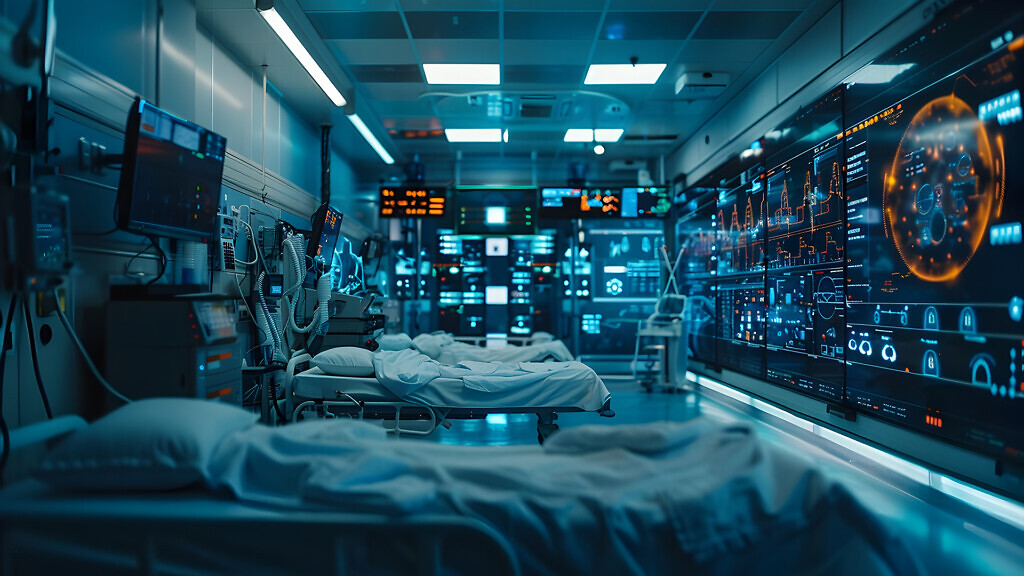As an emergency physician and digital health company founder, I’ve witnessed firsthand the transformative power of technology in addressing the challenges faced by our urgent and emergency care services across the NHS.
The integration of digital solutions is breathing new life into our overburdened A&E departments, streamlining workflows, and improving patient access to care, all while trying to protect and keep our patients in some of the busiest parts of our hospitals safe.
Revolutionising A&E triage
One of the most significant advancements in urgent care has been the implementation of digital triage systems. These innovative platforms are dramatically reducing waiting times and ensuring patients receive the most appropriate care swiftly. For instance, solutions such as eConsult and Opto Triage system allow patients to check in and undergo self-triage using tablets upon arrival at A&E. Within minutes, patients receive a risk stratification score, allowing the department to prioritise patients that need the most urgent care, whilst also reducing some administrative tasks.
This approach not only expedites the triage process but also provides clinical staff with real-time visibility of the waiting room, enabling them to manage demand based on acuity rather than chronology. The result should be a more efficient and safer environment for both patients and staff.

Safer waiting rooms
A&E waiting rooms are some of the most crowded areas of a hospital, with many seeing as many as 500 patients in a day. The waiting rooms are typically staffed by one or two clinicians, which (if viewed as a ward) would be deemed highly unsafe.
ERA Waiting is a digital solution that aims to reduce the risk of clinical incidents and patient complaints within these high-risk areas by allowing patients to alert members of the clinical team that they have a clinical issue like vomiting, pain, or bleeding. This allows the clinician to respond to those patients in a timely but controlled manner. The patients can also request general and mobility assistance which reduces burdens on reception staff.
Streamlining workflows
Digital transformation is also revolutionising how healthcare professionals manage patient information and coordinate care. The implementation of Electronic Document and Records Management (EDRM) systems has led to significant improvements in efficiency and cost savings. St Helens & Knowsley Teaching Hospitals, for example, digitised 155,000 medical records which eliminated the need for 7,000 hand-delivered letters each week and resulted in £1.4 million in savings over 22 months.
Moreover, the integration of AI-powered platforms like Visiba into NHS 111 services is further streamlining workflows. These systems use generative and conversational AI to conduct initial patient assessments, complete with image analysis and priority scoring based on the Manchester triage system. This technology not only reduces the workload on non-clinical staff but also provides clinicians with comprehensive, pre-formed cases for review.

Widening access to care
Digital solutions are also playing a crucial role in widening access to urgent care services. Online consultation providers have launched platforms that help patients quickly access the correct form of clinical care.
These systems can direct patients to various services based on their symptoms and medical history, including face-to-face GP appointments, pharmacy consultations, or safe self-care options.
The main issue with such systems has been around their regulatory compliance and the need for them to operate as a medical device, given they now support clinical decisions.
Additionally, the development of telehealth services has enabled clinical care to be delivered remotely when appropriate, ensuring patients receive specialist expertise regardless of their location. This is particularly beneficial for those in rural areas or with mobility issues who might otherwise struggle to access urgent care services.
Looking ahead
As we continue to harness the power of digital technology, the future of urgent and emergency care looks promising. The integration of AI, machine learning, and advanced data analytics will likely lead to even more sophisticated triage systems and predictive models for patient care.
It is crucial to remember, however, that technology is not a panacea. Its successful implementation requires careful planning, robust infrastructure, and ongoing training for healthcare professionals. As we move forward, we must ensure that digital transformation enhances rather than replaces the human touch in healthcare delivery. Fundamentally, if we are to see further improvements in this space, we need to understand the data within it better and to involve patients in their care, through initiatives such as the NHS App.
By embracing these digital innovations, we can create a more responsive, efficient, and accessible urgent care system that better serves the needs of our patients and healthcare professionals alike.
Dr. Michael Watts is the co-founder and CEO of Blüm Health, a NHS Innovation Accelerator Fellow and a NHS England Clinical entrepreneur and mentor.



